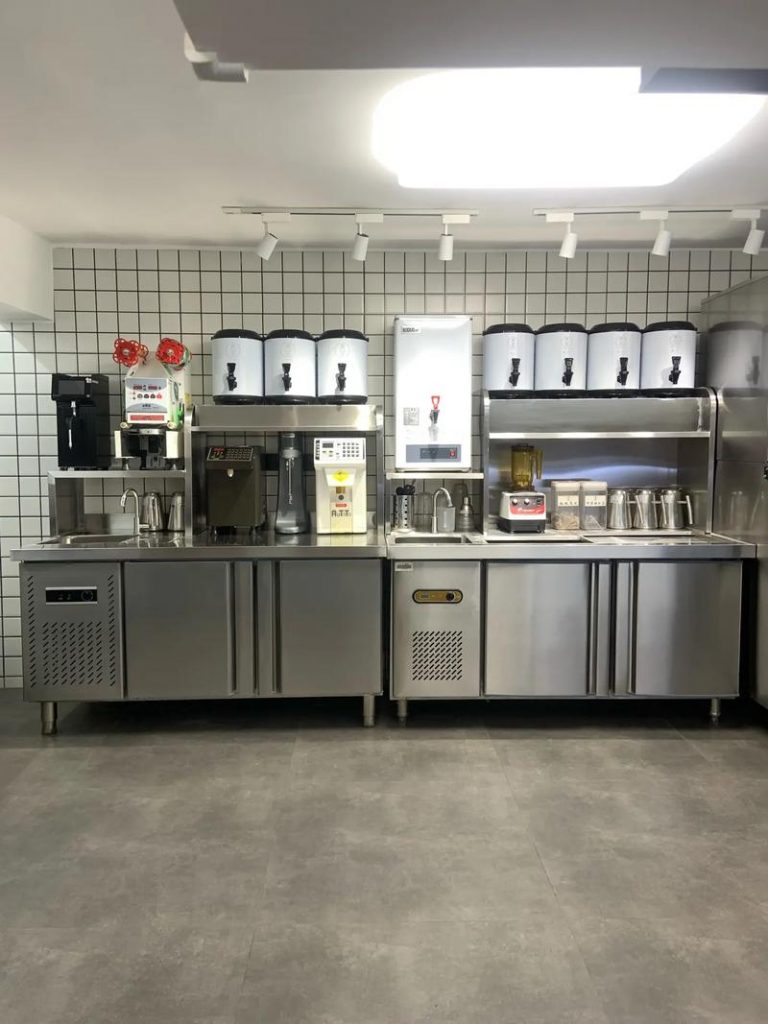
The bubble tea industry has evolved from a Taiwanese street food phenomenon to a global billion-dollar market, driven by Gen Z and millennial consumers seeking experiential, Instagrammable beverages. Behind this growth lies a surge in demand for advanced bubble tea equipment factories that blend innovation, sustainability, and scalability. As a Chinese manufacturer specializing in turnkey solutions, we explore how technological advancements and eco-conscious practices are reshaping equipment design, while addressing the challenges of serving a global clientele.
—
Technological Innovations Reshaping Bubble Tea Production
Modern consumers expect speed, customization, and precision in their drinks. To meet these demands, leading bubble tea equipment factories are integrating cutting-edge technologies:
1. IoT-Enabled Brewing Systems
– Smart Controllers: Remote monitoring of tea brewing temperatures, milk ratios, and boba texture via mobile apps.
– Automated Workflow: Machines with AI algorithms adjust extraction times based on real-time sales data, reducing waste.
2. 3D Printing for Custom Components
– Factories now produce bespoke parts (e.g., tamper-proof lids, ergonomic handles) using 3D printing, reducing lead times and costs.
3. Robotic Barista Stations
– Fully automated systems for milk steaming, boba straining, and drink assembly, ideal for 24/7 operations or high-traffic areas.
—
Sustainability: A Core Pillar for Modern Manufacturers
With increasing regulatory pressure and consumer demand for eco-friendly practices, bubble tea equipment factories are prioritizing green manufacturing:
– Energy-Efficient Machines: Inverters and heat recovery systems cut power consumption by up to 30%.
– Reusable Components: Washable silicone strainers and stainless-steel milk pitchers replace single-use plastics.
– Circular Design: Equipment built with modular, repairable parts to extend lifecycles and reduce e-waste.
For instance, our factory uses recycled aluminum in refrigeration units and partners with certified e-waste recyclers globally.
—
Global Market Challenges and Solutions
Exporting bubble tea equipment requires navigating diverse regulations, cultural preferences, and logistical hurdles. Here’s how factories adapt:
1. Regional Customization
– Middle East: Heat-resistant materials for high-ambient-temperature environments.
– Europe: Compact designs to comply with strict space regulations in cafés.
2. Localized Compliance
– Certifications like NSF (US), LFGB (Germany), and HACCP (global food safety) ensure market accessibility.
3. Streamlined Logistics
– Partnering with third-party freight forwarders for door-to-door shipping, including sea freight for bulk orders and air freight for urgent shipments.
—
The Role of Data Analytics in Equipment Optimization
Leading factories leverage data to refine designs and enhance customer ROI:
– Usage Analytics: Track machine performance metrics (e.g., energy use, downtime) to recommend upgrades.
– Consumer Insights: Share trending drink recipes (e.g., matcha lattes with coconut milk) to inspire equipment configurations.
—
Case Study: Scaling a Franchise with Turnkey Solutions
A Southeast Asian bubble tea chain expanded from 10 to 100 stores within two years by partnering with a specialized factory:
1. Customized Equipment: Multi-cup fillers and frozen drink machines tailored to high-volume operations.
2. Training Programs: On-site staff training in equipment maintenance and beverage consistency.
3. After-Sales Support: Remote diagnostics and 48-hour spare part delivery reduced downtime by 60%.
—
Future Outlook: AI, Sustainability, and Beyond
The next decade will see even greater integration of technology and eco-innovation:
– AI-Powered Predictive Maintenance: Machines that self-diagnose issues before failures occur.
– Carbon-Neutral Factories: Transitioning to renewable energy sources like solar panels and wind turbines.
– Biodegradable Packaging Integration: Machines designed to handle compostable cups and lids seamlessly.
—
How to Partner with a Forward-Thinking Factory
To stay ahead in the competitive bubble tea market, follow these steps:
1. Audit Suppliers: Ensure they invest in R&D and sustainability initiatives.
2. Demand Transparency: Request detailed lifecycle assessments of equipment.
3. Collaborate on Design: Co-create machines that reflect your brand’s eco-values and operational needs.
—
Conclusion
The bubble tea equipment industry is at a pivotal moment, where innovation and sustainability are no longer optional but essential. By partnering with a factory that embraces IoT, circular design, and global compliance, café owners and franchises can future-proof their operations while delighting eco-conscious customers.
Ready to revolutionize your bubble tea business? Let’s build a smarter, greener, and more profitable future together.
Article link:https://www.vlefooena.com/manufacturer/3705/

No reply content